Turn off of U.S. 14 as you approach La Crosse, Wisconsin, from the east, and a small road goes a short way to the Shrine of Our Lady of Guadalupe. The shrine is no small affair, but rather a complex of buildings and sites, including a large shrine church, chapels, statues, memorials, devotion areas, the Stations of the Cross, a rosary walk, and a visitors center plus cafe and gift shop, mostly along a winding walking path through hilly, wooded territory.
Roughly 100 acres, I’ve read, and while it looks like a rural setting, according to Google Maps, the boundaries of the city of La Crosse reach down to the south like a dogleg to include the area around the shrine. Maybe the Diocese persuaded the City to annex the land, to facilitate city services.
Why La Crosse? As far as I can tell, because the former Bishop of La Crosse, lately Cardinal Raymond Leo Burke, really wanted a shrine. He asked permission of the Holy See, which agreed, though I like to think that at the bottom of one communique or another, the Vatican also said, you figure out how to pay for it.
Whatever the case, funds were obtained and construction began in 2004, with the shrine dedicated in 2008. So in the long history of Catholicism, the place is spanking new.
We arrived mid-afternoon on Saturday. Almost at once the curving path offers a nice view of the surrounding Driftless Area (and the parking lot).
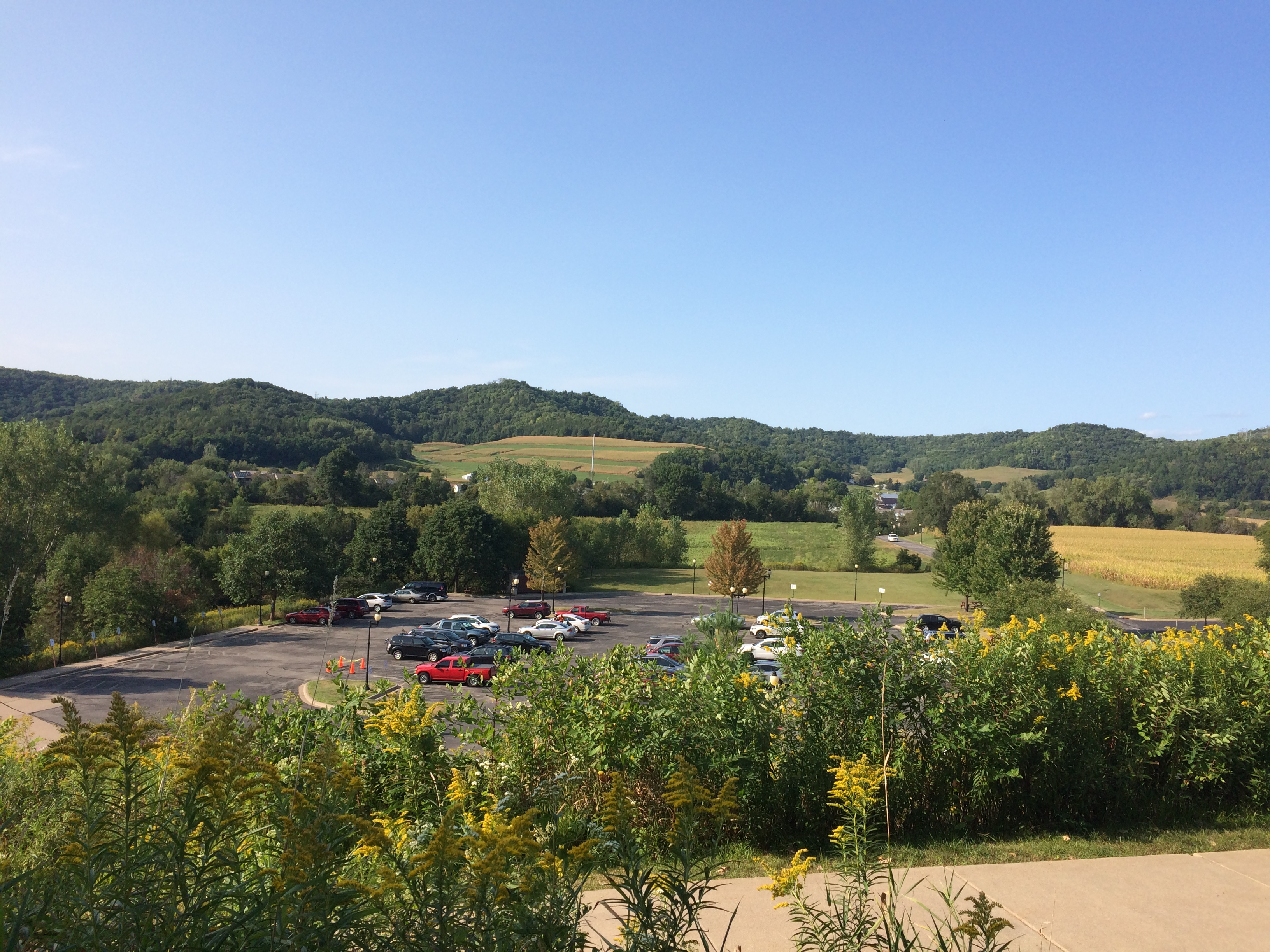 The first structure on the path is the Mother of Good Counsel Votive Candle Chapel, designed by the locally based River Architects, who have done a number of religious structures.
The first structure on the path is the Mother of Good Counsel Votive Candle Chapel, designed by the locally based River Architects, who have done a number of religious structures.
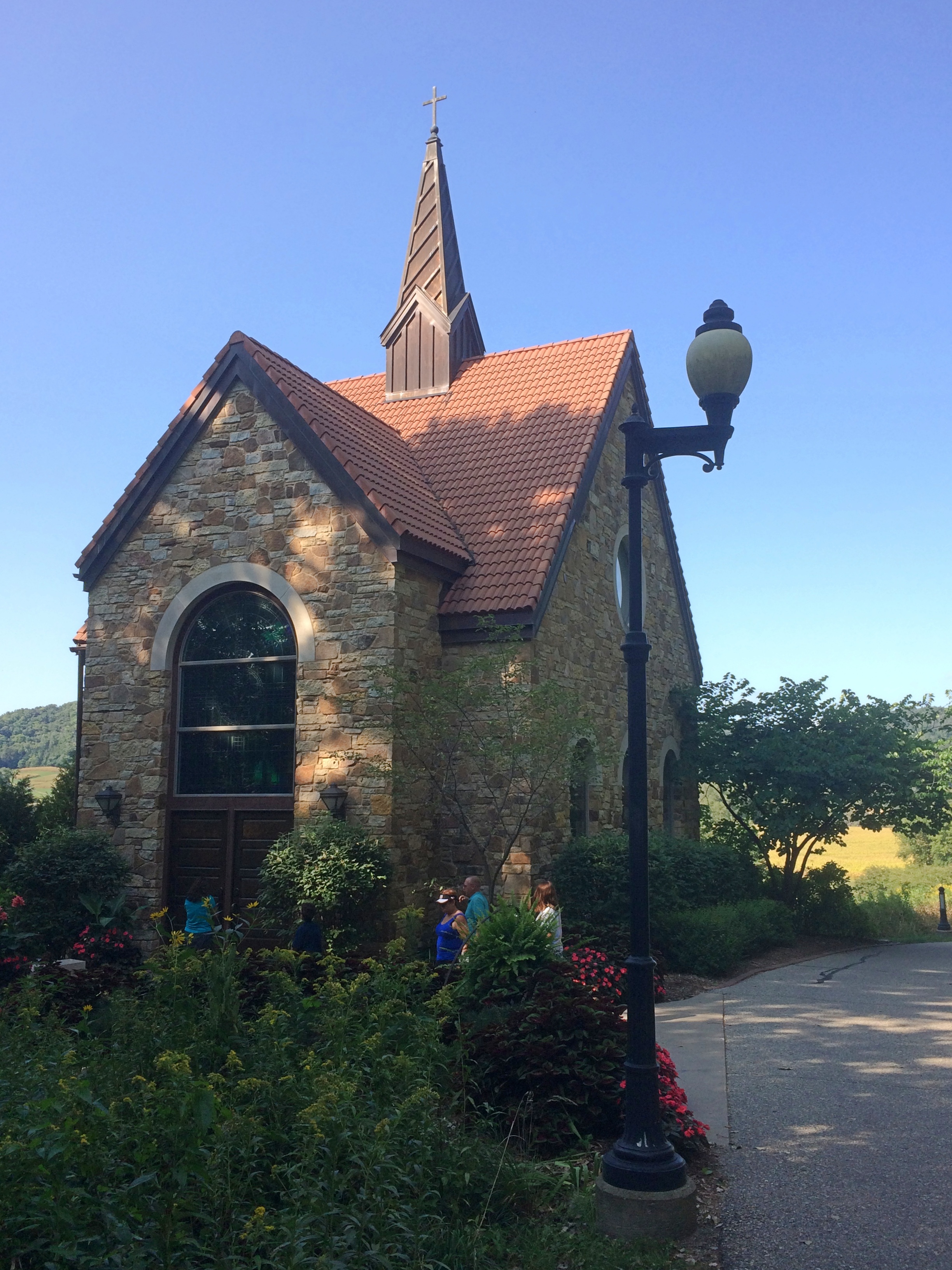 I didn’t count them, but I’ve read there are 576 votive candles inside the chapel.
I didn’t count them, but I’ve read there are 576 votive candles inside the chapel.
 Further along the path are devotional areas, including one featuring Saint Kateri Tekakwitha, Lily of the Mohawks, with a bronze by artist Cynthia Hitschler.
Further along the path are devotional areas, including one featuring Saint Kateri Tekakwitha, Lily of the Mohawks, with a bronze by artist Cynthia Hitschler.
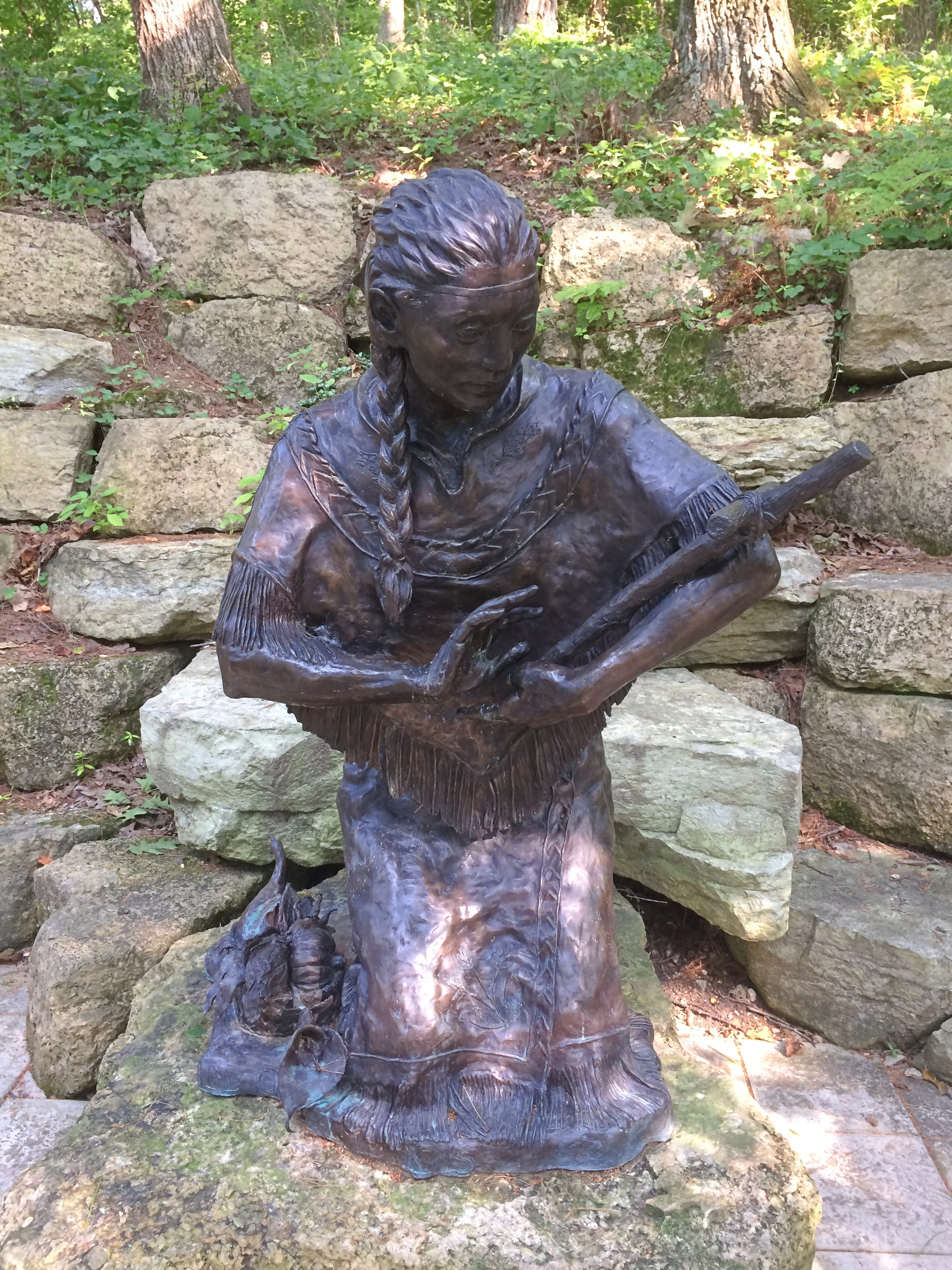 Around a bend is the Memorial to the Unborn, also by River Architects.
Around a bend is the Memorial to the Unborn, also by River Architects.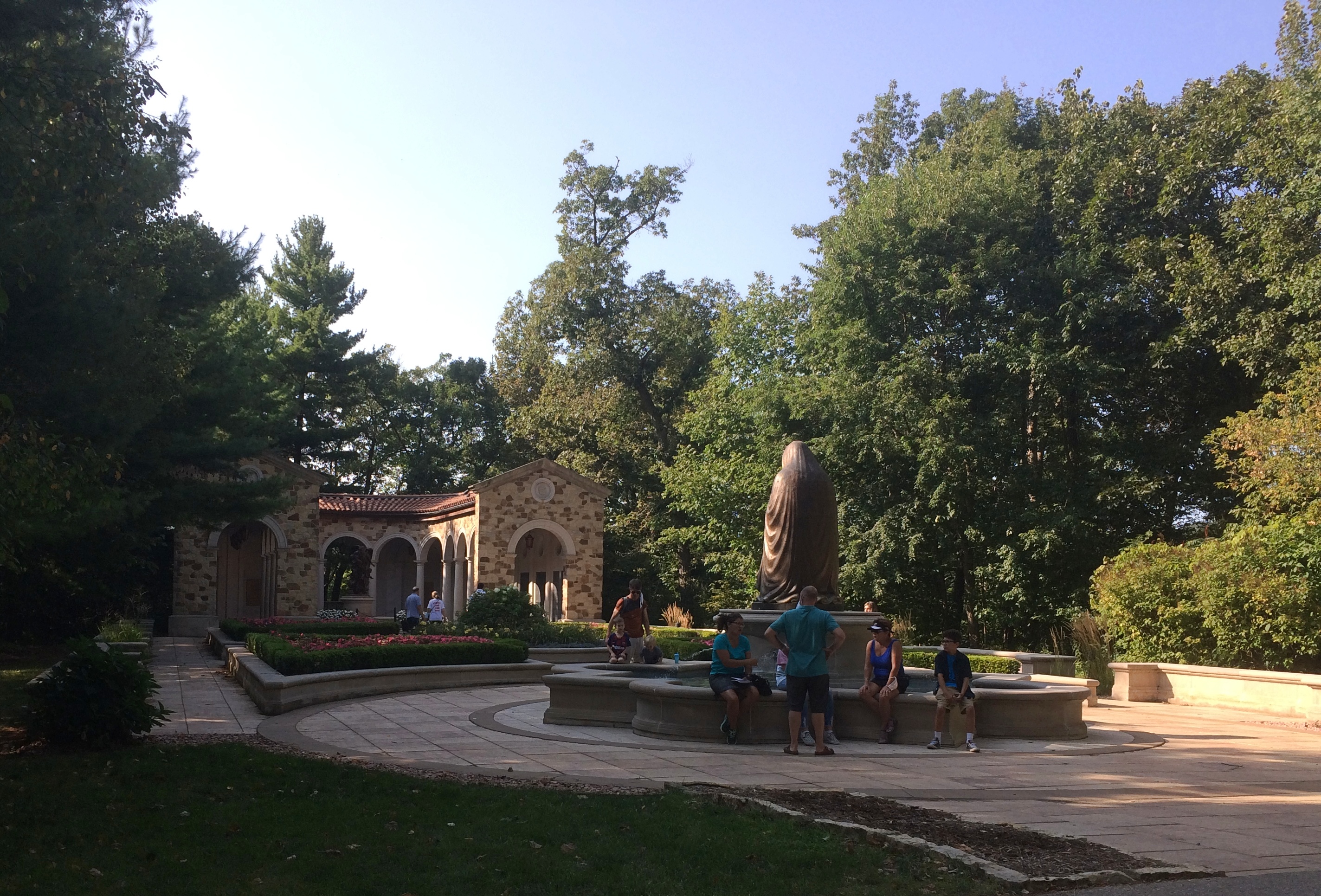
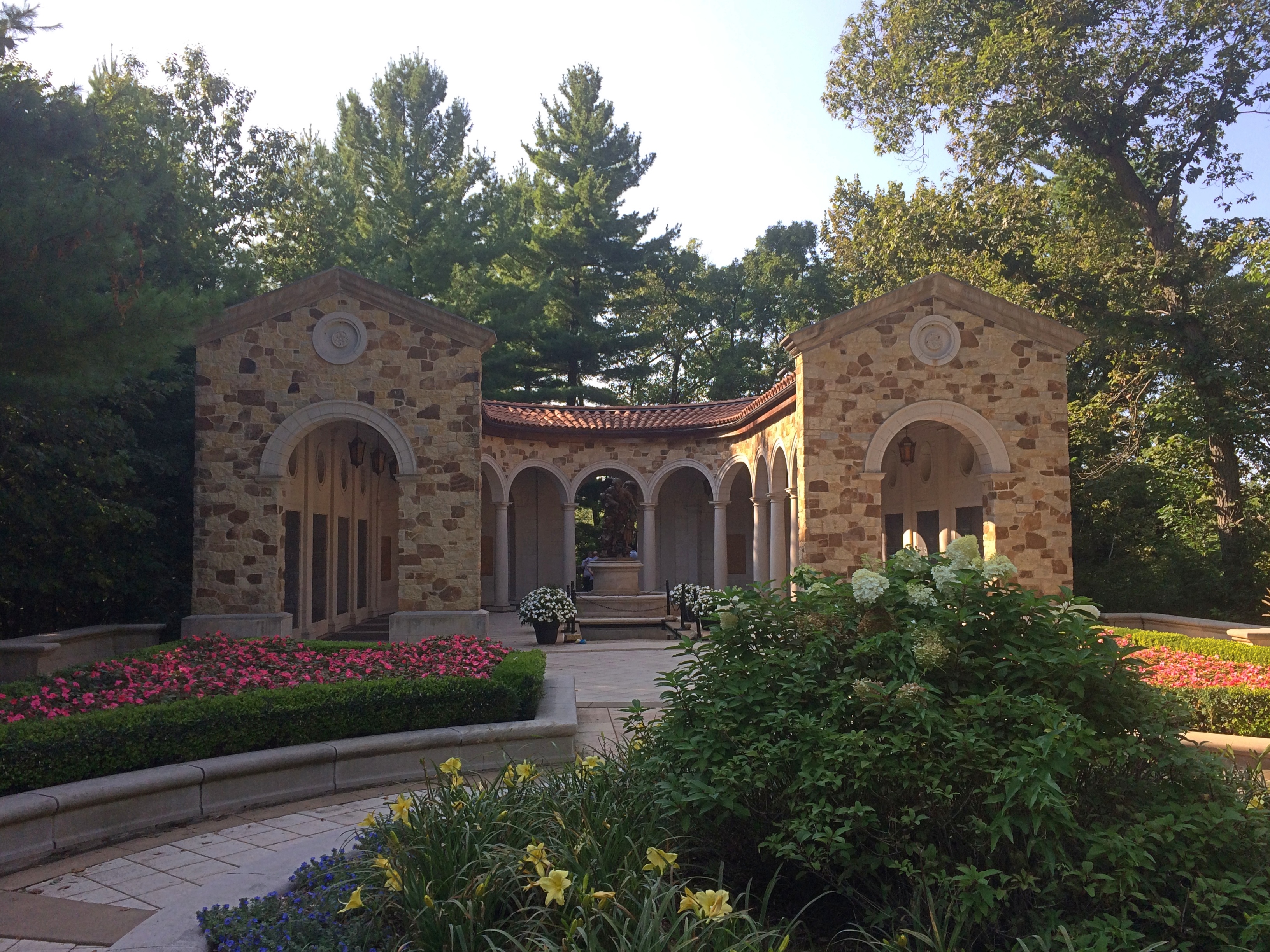
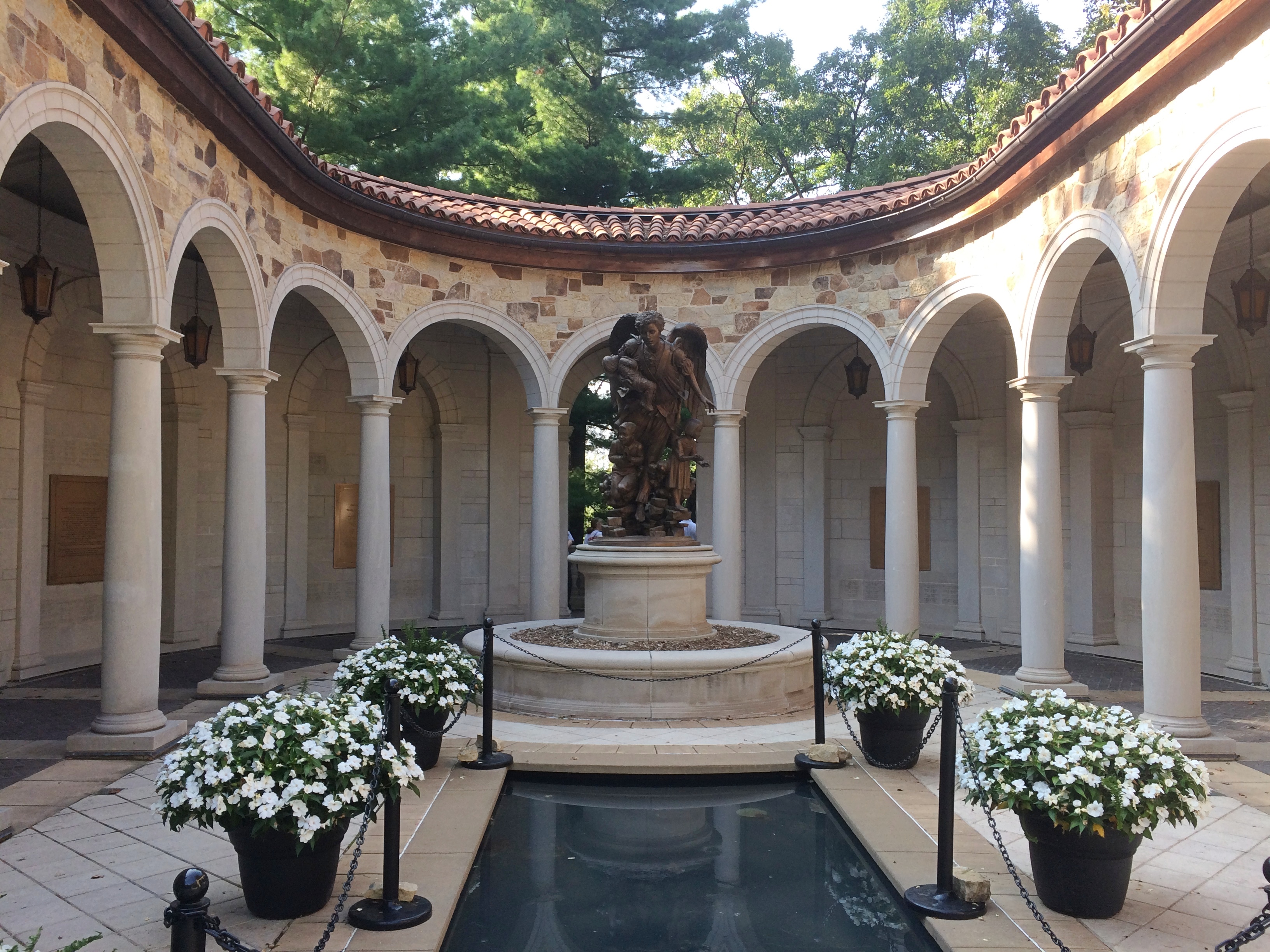
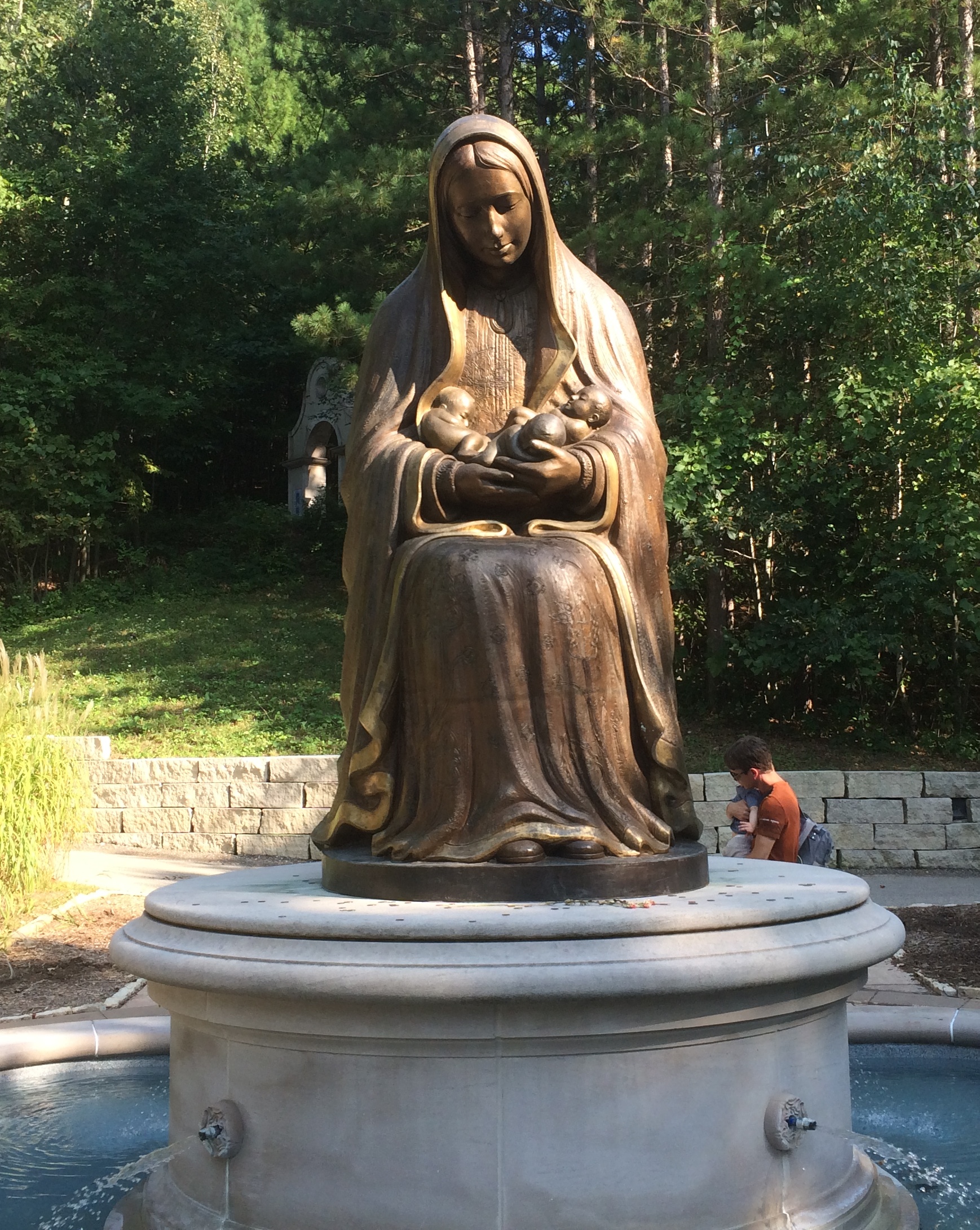 Nearby is a plaza fronting the Shrine Church, a design using stone from Minnesota and Wisconsin by Duncan Stroik, another specialist in sacred spaces. The interior takes inspiration from St. Mary Major in Rome.
Nearby is a plaza fronting the Shrine Church, a design using stone from Minnesota and Wisconsin by Duncan Stroik, another specialist in sacred spaces. The interior takes inspiration from St. Mary Major in Rome.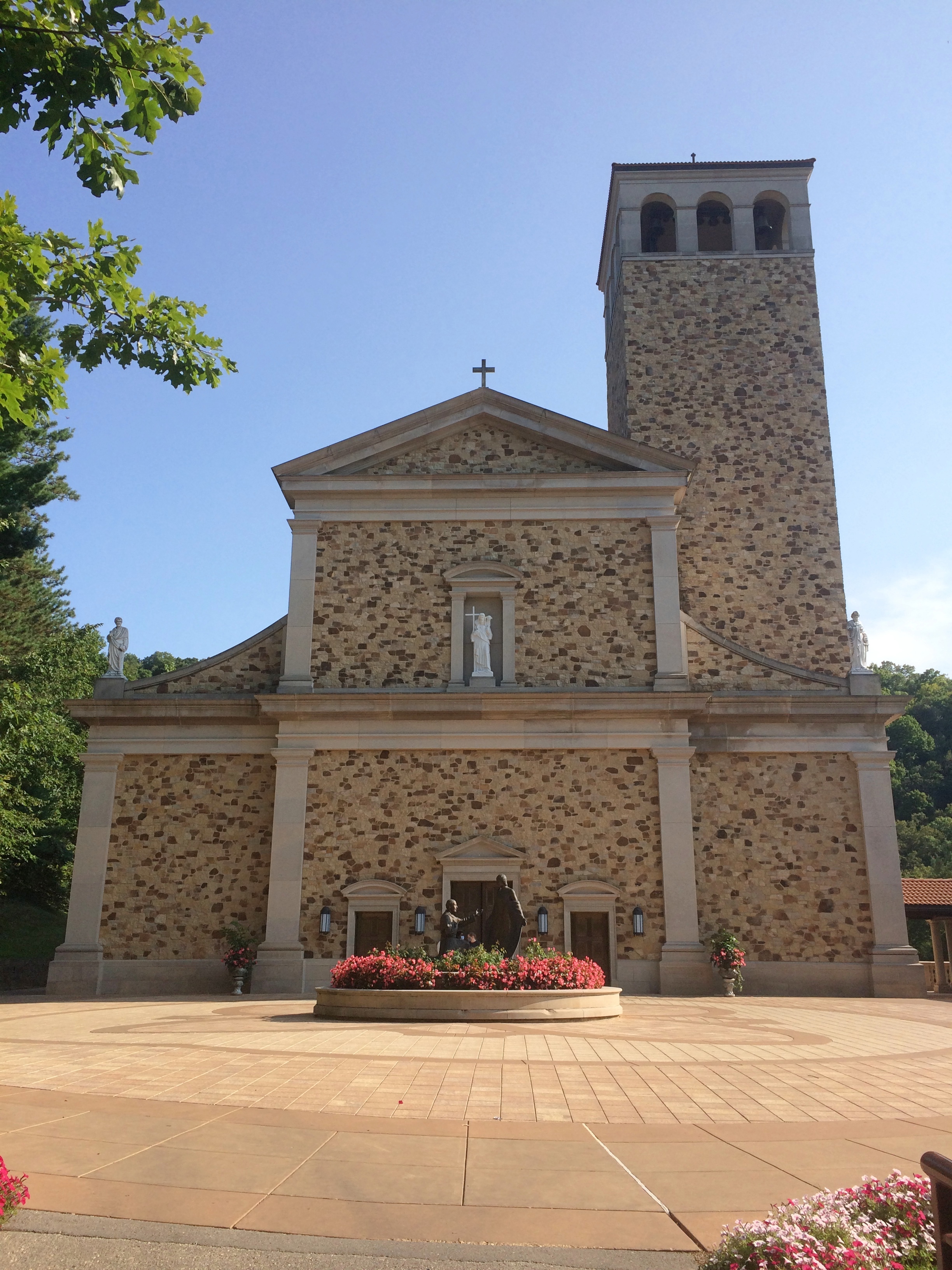


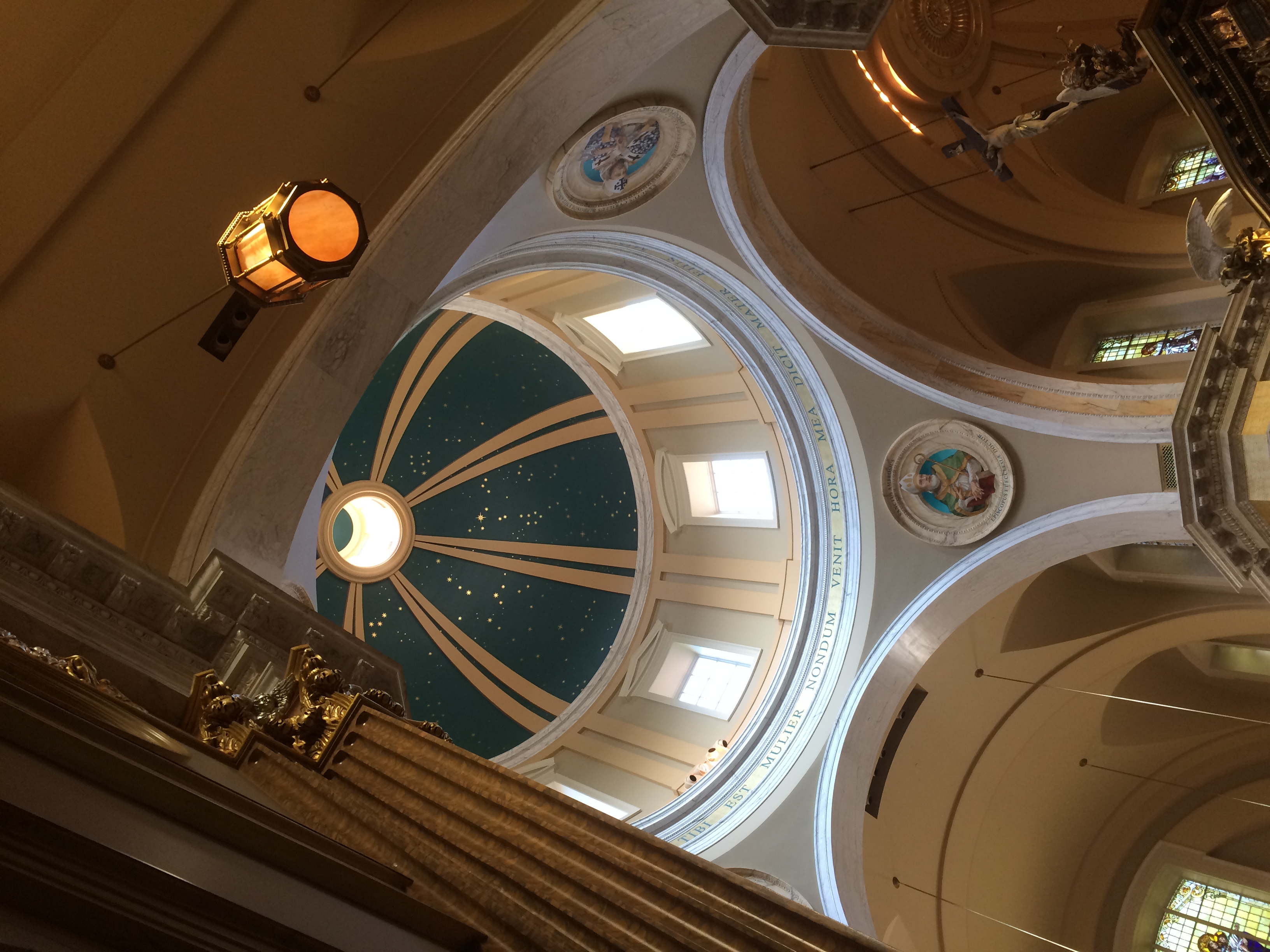 On the side walls are paintings, mostly of saints, along with reliquaries in glass cases under the paintings. I encountered one of Bl. Miguel Agustin Pro, S.J., with a reliquary containing one of his first-class relics, though the sign didn’t say what.
On the side walls are paintings, mostly of saints, along with reliquaries in glass cases under the paintings. I encountered one of Bl. Miguel Agustin Pro, S.J., with a reliquary containing one of his first-class relics, though the sign didn’t say what.
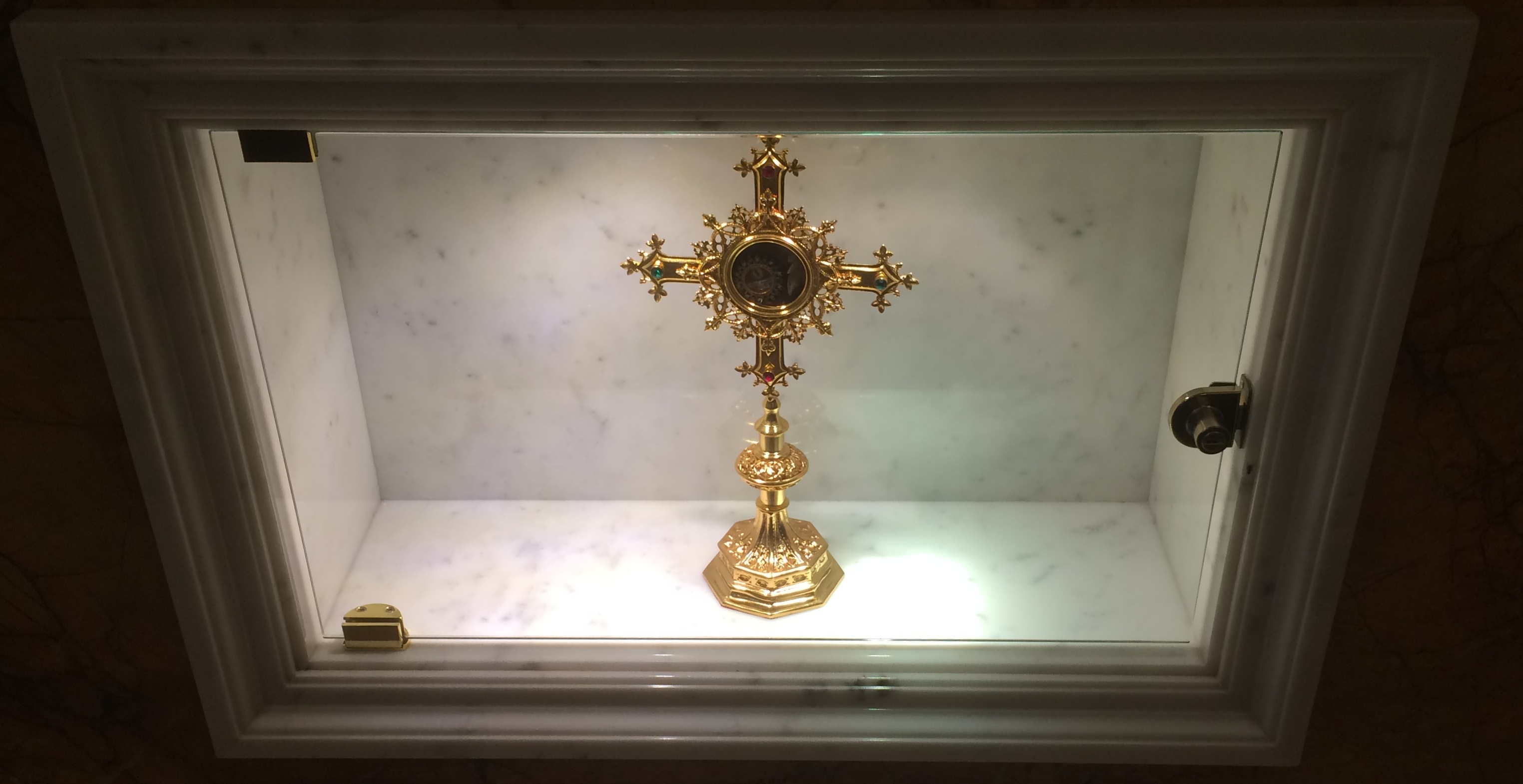 I’d encountered him before, in wood, but without any relics.
I’d encountered him before, in wood, but without any relics.